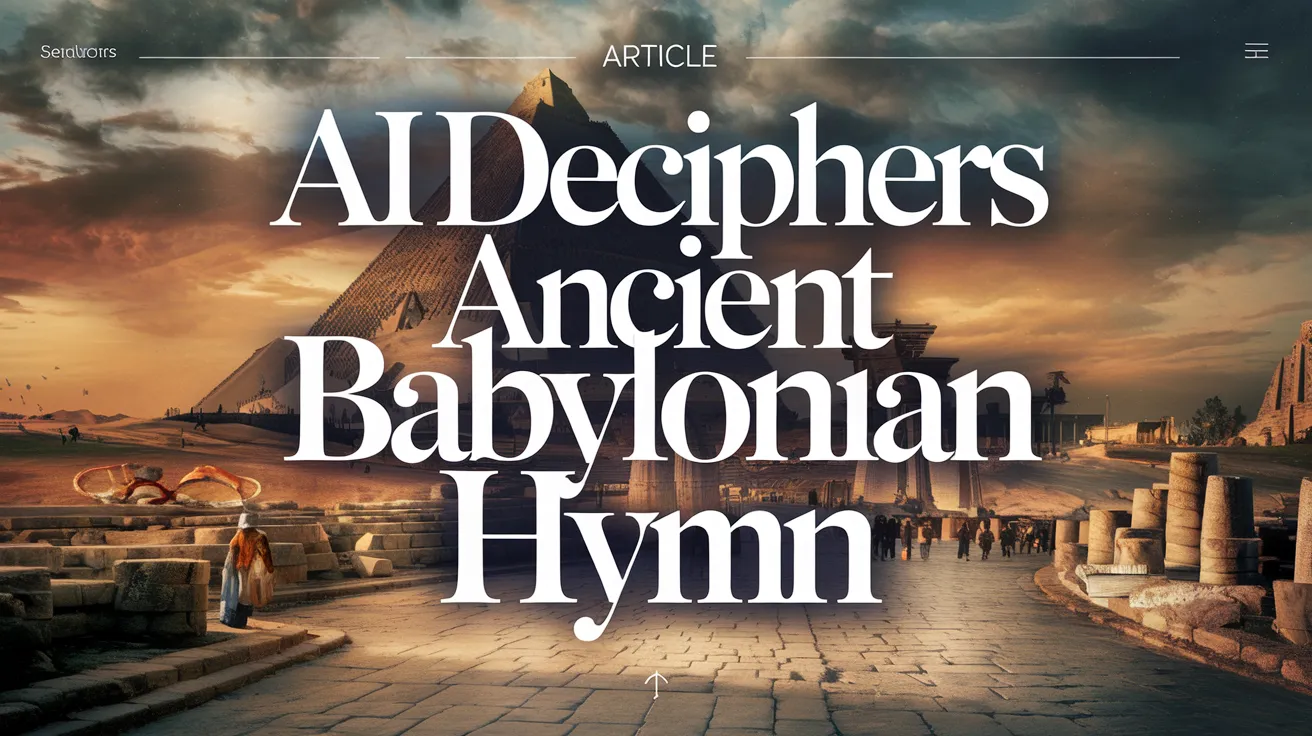AI Deciphers Ancient Babylonian Hymn

A team of ancient literature experts has successfully deciphered a Mesopotamian text that had been missing for over 1,000 years. The text, known as the Hymn to Babylon, is inscribed on clay tablets and celebrates the ancient city’s grandeur, providing fresh insights into the daily lives of its inhabitants. The findings are detailed in a study published in the journal Iraq.
Babylon, which thrived around 2,000 BCE, was once considered the largest city in the world and remains a UNESCO World Heritage Site about 52 miles from present-day Baghdad. This ancient city was a major cultural center, influencing foundational written works, including the Enuma Elish, a religious text detailing the creation of the universe, and the renowned Code of Hammurabi, which introduced the principle of “innocent until proven guilty.” Most Babylonian texts were written in cuneiform on clay tablets, and many have survived only in fragmented form.
A collaborative effort led by researchers from the University of Baghdad and Ludwig Maximilian University of Munich aimed to decipher and preserve hundreds of cuneiform tablets discovered in the ancient Sippar Library, located in the Temple of Shamash. This library is steeped in legend, including tales that it housed tablets hidden by Noah before the great flood.
Assyriologist Enrique Jiménez, co-author of the study, is digitizing fragments through the Electronic Babylonian Library Platform. With the aid of artificial intelligence, he successfully identified 30 manuscripts related to the hymn that were previously unknown. “Using our AI-supported platform, we managed to piece together the fragments in a fraction of the time it would traditionally take,” Jiménez stated.
The recovered hymn, consisting of around 250 lines, likely originates from the beginning of the first millennium BCE. It vividly celebrates the city, describing its architecture and the life-sustaining waters of the Euphrates River, which nourished the land. “It was written by a Babylonian who wanted to praise his city,” explained Jiménez, emphasizing its relevance in reflecting urban society of the time.
Significantly, the hymn also offers insights into the role of women in Babylonian culture, noting that many were priestesses, and it portrays the residents as respectful towards foreigners. An excerpt describing the Euphrates states:
The Euphrates is her river—established by wise lord Nudimmud—
It quenches the lea, saturates the canebrake,
Disgorges its waters into lagoon and sea,
Its fields burgeon with herbs and flowers,
Its meadows, in brilliant bloom, sprout barley,
From which, gathered, sheaves are stacked,
Herds and flocks lie on verdant pastures,
Wealth and splendor—what befit mankind—
Are bestowed, multiplied, and regally granted.
The potential for continued advancements in AI-assisted reading of ancient texts opens the door for more thorough translations and a deeper understanding of this historic celebration of Babylon.